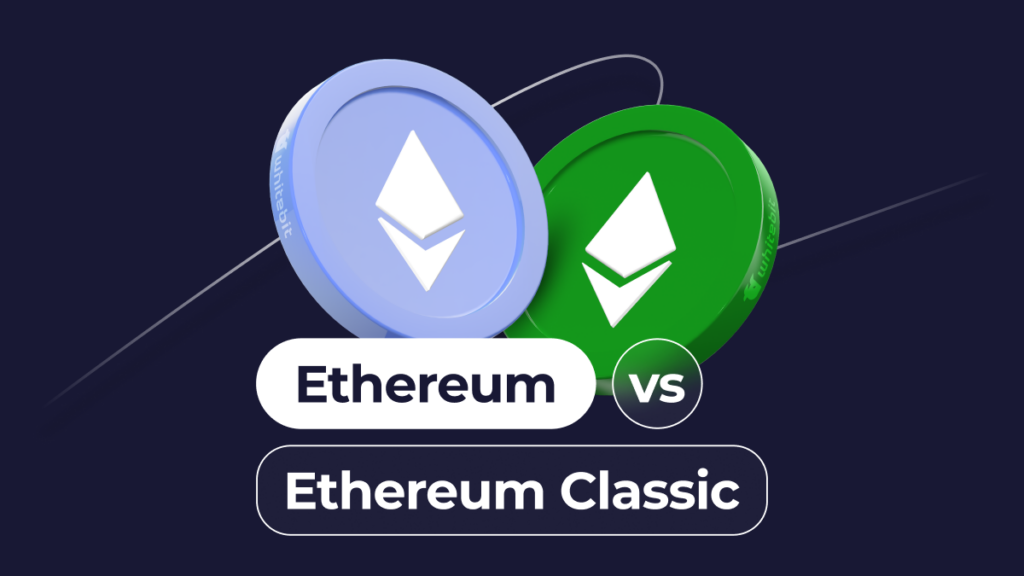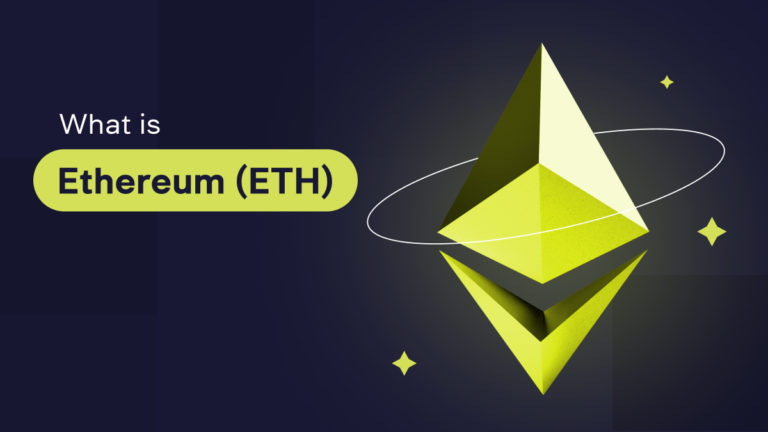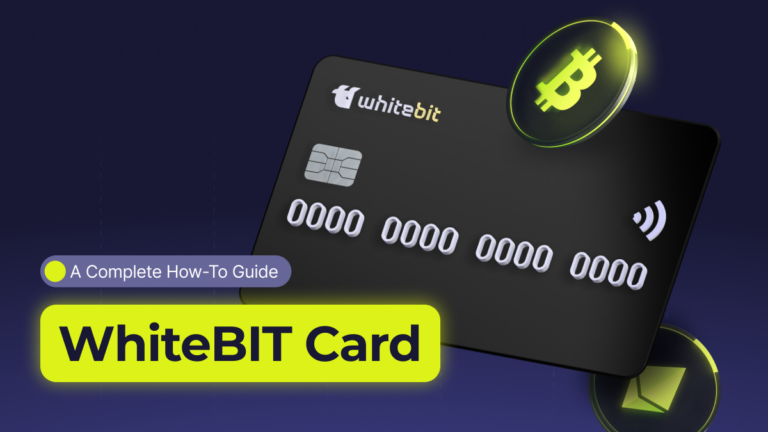Ethereum vs. Ethereum Classic: What is the Difference?

Content
In the rapidly evolving world of crypto assets, Ethereum and Ethereum Classic stand out as two prominent blockchain platforms. Both originating from the same source, they diverged after a significant event in the crypto world known as the DAO hack. This article delves into what’s the difference between Ethereum and Ethereum Classic, providing a comprehensive understanding for both newcomers and seasoned enthusiasts.
Brief History of Ethereum and How It Works
Ethereum was proposed in late 2013 by programmer Vitalik Buterin and development began through a Swiss company, Ethereum Switzerland GmbH (EthSuisse). The Ethereum platform went live on July 30, 2015, with 72 million coins “premined.” Ethereum introduced the concept of a smart contract—a self-executing contract where the terms are directly written into code, facilitating, verifying, or enforcing the performance of a contract automatically.
Ethereum operates on a decentralized network of computers (or nodes) that collectively follow a set of rules (the Ethereum protocol). Its native cryptocurrency, Ether (ETH), is used to compensate participants who perform computations and validate transactions.
Ethereum Hard Fork: Consequences of the DAO Hack
In June 2016, a decentralized autonomous organization (DAO) built on Ethereum was exploited, resulting in the theft of 3.6 million Ether (worth approximately $50 million at the time). This incident prompted a heated debate within the Ethereum community on responding. The consensus was to implement an Ethereum fork, effectively rewriting Ethereum’s blockchain to erase the hack and return the stolen funds. This controversial decision led to creating two separate blockchains: Ethereum (ETH), which implemented the hard fork, and Ethereum Classic (ETC), which continued on the original blockchain without alteration.
How Does Ethereum Classic Work?
Ethereum Classic operates on the original Ethereum blockchain, preserving its immutable nature by not reversing the DAO hack. Like Ethereum, Ethereum Classic is a decentralized platform that runs smart contracts applications that run exactly as programmed without any possibility of downtime, fraud, or third-party interference. Ethereum Classic aims to maintain the principles of “Code is Law,” meaning that the code is the ultimate authority and cannot be altered, even in the event of theft or hacking.
Difference Between Ethereum and Ethereum Classic
Ethereum classic vs Ethereum: The primary difference between Ethereum and Ethereum Classic lies in their philosophical approach and the events surrounding the DAO hack. Ethereum, following the hack, implemented a hard fork to restore the stolen funds, prioritizing the community’s decision to maintain the trust and usability of the platform. This action underscored Ethereum’s willingness to intervene and introduce changes to the blockchain when necessary to preserve the integrity and future growth of the ecosystem. By choosing this path, Ethereum aimed to reassure users and investors, fostering an environment conducive to innovation and widespread adoption.
In stark contrast to Ethereum or Ethereum Classic chose to uphold the principle of immutability, a core tenet of blockchain technology that asserts that the blockchain should remain unchanged once it is established. The Ethereum Classic community believed that code should not be altered under any circumstances, even in the face of significant losses due to the DAO hack. This decision to continue on the original blockchain without implementing the hard fork highlights Ethereum Classic’s commitment to the concept of “Code is Law.” This principle is rooted in the idea that the integrity of the blockchain must be preserved above all else, ensuring that once private keys, transactions, or contracts are recorded, they cannot be undone or altered.
This philosophical divide is reminiscent of the split between Bitcoin and Bitcoin Cash (BCH). Similar to Ethereum Classic, Bitcoin Cash emerged from a hard fork due to differing views on how to best scale the network and preserve its core principles. Both Ethereum Classic and Bitcoin Cash (BCH) illustrate how divergent philosophies within the cryptocurrency community can lead to the creation of distinct blockchains, each adhering to its own set of values and priorities.
Technologically, both blockchains started identically but have since diverged significantly. One of the most notable differences is their approach to consensus mechanisms. Ethereum has transitioned towards a Proof of Stake (PoS) consensus mechanism with the introduction of Ethereum 2.0. This shift aims to address scalability issues and reduce the energy consumption associated with mining. PoS is expected to enhance the network’s efficiency and sustainability by allowing validators to create new blocks and validate transactions based on the number of coins they hold and are willing to “stake” as collateral rather than relying on computational power. Additionally, Ethereum’s development has included innovations such as introducing a liquidity pool, which facilitates decentralized trading and improves the network’s overall functionality and user experience.
Ethereum Classic, on the other hand, remains committed to the original Proof of Work (PoW) consensus mechanism, similar to Bitcoin. PoW requires miners to solve complex mathematical problems to validate transactions and create new blocks. Proponents of PoW argue that it offers a higher level of security and decentralization, as it is more resistant to certain types of attacks and manipulation. However, PoW is also criticized for its significant energy consumption and the environmental impact of extensive mining operations.
Beyond consensus mechanisms, the two blockchains have also diverged in terms of their development focus and community initiatives. Ethereum has a larger and more active development community, driving continuous upgrades and innovations on the platform. This includes the implementation of various improvement proposals (EIPs) that enhance the functionality, security, and scalability of the Ethereum network. Ethereum’s extensive ecosystem includes numerous decentralized applications (dApps), decentralized finance (DeFi) projects, and non-fungible tokens (NFTs), which contribute to its widespread adoption and market dominance.
Ethereum Classic, while smaller, has maintained a dedicated community that values the original principles of blockchain technology. The focus within the Ethereum Classic community tends to be on stability and maintaining the original vision of the Ethereum protocol. This includes a commitment to backward compatibility and ensuring that applications built on the Ethereum Classic blockchain continue functioning as intended without requiring significant changes or upgrades. Users of Ethereum Classic often rely on their crypto wallets to manage and interact with their tokens, ensuring that their holdings remain secure and accessible while upholding the core values of immutability and decentralization.
What are the Similarities between ETH and ETC?
Despite their differences, Ethereum and Ethereum Classic share several similarities that stem from their common origin. Both platforms are decentralized, meaning they operate on a network of nodes spread across the globe rather than relying on a central authority. This decentralization ensures that both Ethereum and Ethereum Classic maintain their core ethos of openness, transparency, and resistance to censorship.
A significant similarity between ETH and ETC is their ability to enable the execution of smart contracts and decentralized applications (dApps). Smart contracts are self-executing contracts where the terms are directly written into code, facilitating, verifying, or enforcing the performance of an agreement automatically without the need for intermediaries. This capability has positioned both Ethereum and Ethereum Classic as foundational platforms in the blockchain ecosystem, fostering innovation and a wide range of applications, from finance to supply chain management.
Another commonality is their shared history up to the point of the hard fork. Both blockchains were initially developed by the same team, including Vitalik Buterin and other prominent figures in the cryptocurrency space. They shared the same technology base, which included the Ethereum Virtual Machine (EVM), a key component that allows for the execution of smart contracts on the network. This shared history means that many of the fundamental features and functionalities of Ethereum and Ethereum Classic are similar, even if they have diverged in their development paths since the split.
Both ETH and ETC have vibrant communities that contribute to the ecosystem’s growth and development. These communities are composed of developers, investors, and enthusiasts who actively participate in governance, propose improvements, and build new applications on the respective platforms. Although the Ethereum community is significantly larger and more active due to its broader adoption and extensive development initiatives, the Ethereum Classic community is also passionate and committed, particularly around the principles of immutability and “Code is Law.”
Both cryptocurrencies serve similar utility functions. Ether (ETH) and Ethereum Classic’s native token (ETC) are used to pay for transaction fees and computational services on their respective networks. This utility ensures that both tokens have inherent value and are integral to the platforms’ operation. They provide the necessary economic incentives for network participants to perform computations, validate transactions, and maintain the overall security and efficiency of the blockchain. Additionally, their respective market cap reflects their utility and the trust that participants place in each network’s viability and potential.
Moreover, both Ethereum and Ethereum Classic use similar programming languages for smart contract development, primarily Solidity. This commonality makes it easier for developers to transition between the two platforms or develop applications that can operate on both networks, thus fostering a degree of interoperability. This interoperability extends to crypto exchanges as well, where both Ethereum and Ethereum Classic are commonly listed, allowing users to trade and manage their assets across both networks with ease.
ETH vs ETC Comparative Table
| Feature | Ethereum (ETH) | Ethereum Classic (ETC) |
| Launch Date | July 30, 2015 | July 30, 2015 |
| Consensus Mechanism | Proof of Stake (PoS) | Proof of Work (PoW) |
| Block Time | ~12 seconds | ~15 seconds |
| Total Supply | Unlimited (with capped annual issuance) | Capped at 210 million ETC |
| Community | Larger, more active | Smaller, more focused on immutability |
| Development | Active development, frequent updates | Steady development, emphasis on stability |
| Smart Contract Capability | Yes | Yes |
| Popularity | Widely used, high market capitalization | Lesser known, lower market capitalization |
| Governance | Decentralized, community and developers | Decentralized, community-driven |
What Is the Difference between Ethereum and Ethereum Classic: The Bottom Line
Though originating from the same blockchain, Ethereum and Ethereum Classic have taken different paths in their evolution. Ethereum has chosen a route that prioritizes scalability, usability, and broad adoption, transitioning to a Proof of Stake consensus mechanism to achieve these goals. Ethereum Classic, on the other hand, remains true to its principles of immutability and the original Proof of Work consensus, attracting those who prioritize security and the “Code is Law” philosophy.
Both platforms have their strengths and cater to different segments of the blockchain community. Ethereum’s extensive development and widespread adoption make it a leader in the smart contract space, while Ethereum Classic’s commitment to immutability offers a compelling option for those valuing blockchain integrity above all.
FAQ
No, Ethereum Classic (ETC) and Ethereum (ETH) are not the same. They were originally the same blockchain but split after the DAO hack in 2016. Ethereum implemented a hard fork to recover the stolen funds, while Ethereum Classic continued on the original blockchain, emphasizing immutability and the principle that "Code is Law."
The choice between Ethereum Classic and Ethereum depends on individual priorities and use cases. Ethereum (ETH) is generally considered better for its active development, transition to Proof of Stake, and larger community, which contribute to its broad adoption and scalability. Ethereum Classic (ETC), however, is favored by those who prioritize the principles of immutability and a consistent Proof of Work consensus mechanism, which some argue provides greater security.










